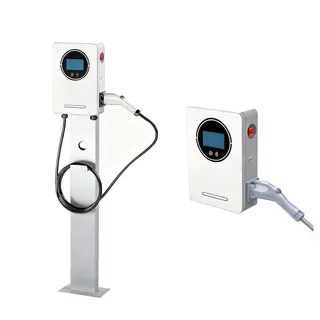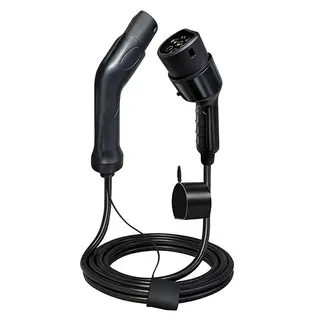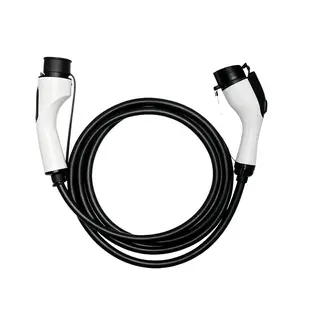With the rapid development of electric vehicles today, charging stations, as an important supporting facility, have also become increasingly popular. However, did you know that there are many types of charging stations, especially when it comes to charging connectors, which exist in various standards? Today, let us take a closer look at these complex charging interface standards to better understand them and make charging easier when using electric vehicles.
First, we must understand that charging connectors are mainly divided into DC connectors and AC connectors.
DC connectors are usually used for fast charging. They can provide high current and high power, generally equipped at fast-charging stations for electric vehicles. This type of charging can supply a large amount of electricity to the vehicle in a short time, making it very suitable for fast-charging stations set up in public places such as shopping malls and gas stations.
AC connectors, on the other hand, are mostly used for home charging stations or portable chargers. Their charging speed is relatively slower, suitable for long parking times such as overnight charging.
When we delve into charging connectors, we find that they have their own "languages" and "rules" in different countries and regions; these are the charging interface standards. These standards not only affect the shape and function of the charging connectors but also determine whether an electric vehicle can be charged smoothly in different regions. So, what are the major global charging interface standards, and what are their features? Let's take a closer look.

Type 1 is the charging interface standard widely used in the United States and in countries closely related to it, such as Japan and South Korea. It includes AC charging stations and portable chargers and mainly provides two voltage levels: 120V (Level 1) and 240V (Level 2). The design of this interface is relatively simple, easy to identify and use, but its charging power is relatively low, suitable for homes or small commercial places.
Type 2 is the standard for electric vehicles in Europe, with a rated voltage of about 230V. In appearance, the Type 2 interface is somewhat similar to the Chinese national standard, but they are easy to distinguish. The European standard interface is recessed (male design), with the black part hollowed out, while the Chinese standard is the opposite. This type of interface is widely used in Europe, designed to accommodate different vehicle models and charging needs. It provides relatively higher charging power and is suitable for both public charging stations and home chargers in Europe.
Since January 1, 2016, China has required that all electric vehicles produced domestically must comply with the national standard GB/T 20234. This regulation ensures that all vehicles produced after 2016 are compatible in terms of charging ports since the standard has been unified. The rated voltage of the GB/T AC charger is generally 220V, corresponding to domestic voltage. Its design takes into full account the actual conditions of the power grid and user needs, ensuring charging safety while improving efficiency.
Tesla initially had its own standard charging interface, but due to market pressure, Tesla began adjusting its standards to make its vehicles more compatible with the market. For example, China-made Teslas must be equipped with a GB/T charging port. The Tesla charging interface features a unique design and was initially "Tesla-exclusive," but as the market opened, its standard gradually gained acceptance by other automakers.
Japan's DC charging connector is CHAdeMO, a unique design mainly used for certain Mitsubishi and Nissan electric vehicle models. The full name CHArge de MOve means "charging while having a cup of tea." This design was made to meet the need for fast charging. The CHAdeMO 1.0 version supports up to 500V/125A (62.5kW) DC charging, while the 2.0 version, launched in 2018, supports up to 400kW. In addition, the CHAdeMO Association and the China Electricity Council (CEC) jointly developed the next-generation CHAdeMO 3.0 charging standard, targeting a power output of about 900kW (600A × 1.5kV).
The charging interface situation in North America is relatively complex, mainly including SAE J1772, CCS (Combined Charging System), and NACS (North American Charging Standard) promoted by Tesla.
The SAE J1772 standard, first released in 1996, is mainly used for AC slow charging and adopts a five-pin single-phase mechanical design. The CCS interface builds upon SAE J1772 by adding DC power transmission pins, sharing charging, control, and grounding terminals. The NACS interface, first used on Tesla vehicles in 2012, was officially opened by Tesla in 2022 to allow other automakers to use it. The NACS interface is compact and streamlined, supporting 500V and 1000V with up to 1000kW ultra-high charging power, and is expected to become the main charging standard in North America in the future.
DC charging connectors generally correspond to AC connectors, with each region having its own standards. For example, the Type 1 (American) corresponds to CCS1, and the Type 2 (European) corresponds to CCS2. China's DC charging standard adopts a "nine-pin" design, with rated voltage generally above 400V and current reaching several hundred amperes. The charging power can reach 250kW, allowing a vehicle to replenish half its battery in just tens of minutes. This high-power charging method is ideal for public fast-charging stations located in places such as shopping malls or gas stations.
Regardless of the type of charging connector, performance and safety are the most important concerns for users. After all, fast charging and safe charging are equally critical. So, what are the characteristics of charging interfaces in terms of performance and safety, and how do they ensure user safety and efficiency during charging? Let's explore further.
DC charging typically has rated voltages of 750V or 1000V, and rated currents of 80A, 125A, 200A, or 250A, with charging power up to 250kW. This high-power charging mode can supply a large amount of electricity to electric vehicles in a short time, significantly improving convenience. For example, the rated voltage of the GB/T DC charging port is generally above 400V, with current reaching several hundred amperes, allowing half a battery to be charged within tens of minutes. The NACS interface supports 500V and 1000V, with up to 1000kW charging capacity, which may enable even faster charging speeds in the future.
During fast charging, the output voltage of a charging station is usually above 300V. To ensure safety, the vehicle and charging station undergo a communication and verification process before charging begins. This process includes several steps:
Connection Confirmation: When the charging connector is plugged in, the vehicle's CC1 and CC2 pins confirm whether the connector and port are properly engaged. CC1 is the charging station's confirmation line, and CC2 is the vehicle's confirmation line. Only when both confirm proper connection does the process proceed.
Vehicle Wake-Up: The charging station outputs 12V auxiliary voltage through A+ and A- ports to wake up the vehicle's VCU (Vehicle Control Unit), signaling that charging is about to start.
Data Matching: Once awake, the vehicle communicates via the S+ and S- pins. The charging station sends identification information to the vehicle's BMS (Battery Management System) and VCU, including details like battery type, required voltage, and current range, ensuring output matches the vehicle's requirements.
Charging Start: After verification, the fast-charging relay inside the control system closes, allowing current to flow through the DC+ and DC- terminals into the battery pack, starting fast charging.
Real-Time Monitoring: During charging, the S+ and S- pins continuously monitor charging status and data. When the battery reaches about 80%, the station receives a command to reduce current, slowly topping off the charge. When the battery is full, charging stops automatically, completing the process.
At present, global electric vehicle charging interface standards differ by region. China uses GB/T 20234.2-2015 and GB/T 20234.3-2015, the EU adopts IEC 62196 and CCS2, Japan uses SAE J1772 and CHAdeMO, while North America employs SAE J1772, CCS1, and NACS.
Although this diversity meets regional needs, it also brings inconvenience. For instance, the same car model may require different charging interfaces in different markets.
In the future, as the electric vehicle market grows and technology advances, charging standards are expected to become more unified. Tesla's decision to open its NACS standard to other manufacturers marks a significant step toward harmonization. Moreover, governments and organizations worldwide are actively promoting mutual recognition and compatibility of standards to improve convenience and infrastructure utilization.
The charging interface standards for electric vehicles are both complex and essential. Understanding them helps users better operate their vehicles and gain clearer insights into the global EV market. Although there are still differences among global standards, technological advancement and market demand will likely lead to a more unified and efficient system in the future.
In summary, whether DC or AC, national or regional, each standard has its own features and advantages. When selecting charging equipment, users should consider their actual needs and scenarios. At the same time, we look forward to more technological innovations and unified standards that will make electric vehicle charging simpler, faster, and safer.



